Back in 2018, our neighbors approached us and asked if we’d be interested in buying their 24-acre blueberry farm. Chris and I were so surprised by this unexpected opportunity and had to really stretch outside our comfort zone to make it work.
But ultimately, we decided to go for it because farms in our valley rarely, if ever, go up for sale and we knew we wouldn’t get another chance like this in our lifetime.
Up until this point, we had been farming a 2-acre plot of rented land behind our house and all of our experience and understanding was based on this small footprint. So the prospect of having more land was both exciting and also very daunting.
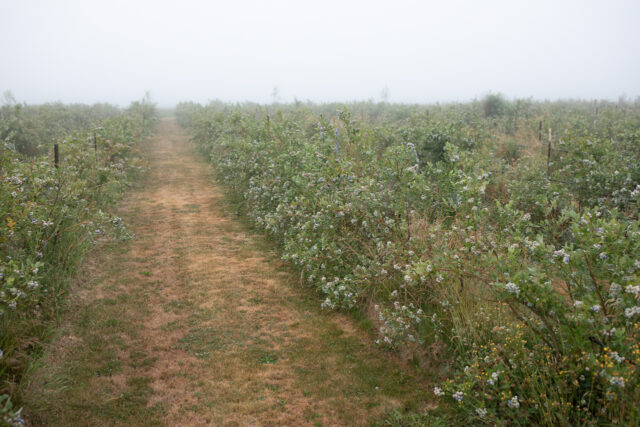
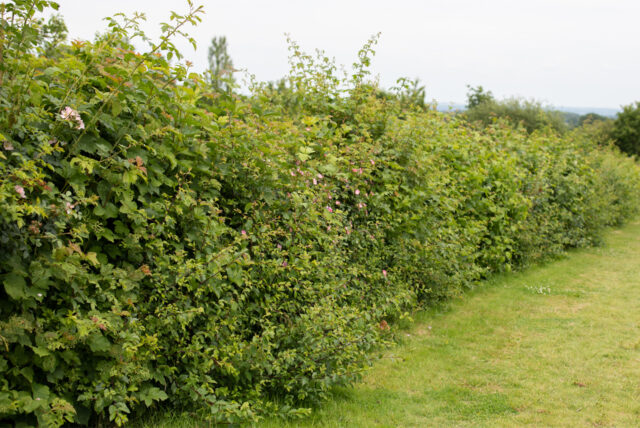
So we decided to take a trip to England and spent 2 glorious weeks touring gardens and farms all around the country looking for inspiration.
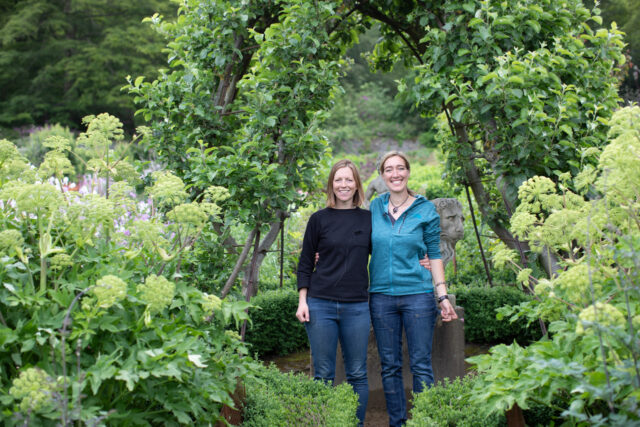
As Becky showed us around the garden, we got to talking about the new farm and all of my dreams for the space. I shared all of the bigger projects that I wanted to include in the new farm’s design, but that I was at a total loss for where to start.
Becky had all of these really wonderful ideas, and to my surprise, had a background as a landscape designer and artist. As we parted ways, I half-jokingly whispered, “You should come to America and help me design the farm!”
I’m still not sure how we were able to pull it off, but we got Becky a visa, and 6 months later, she arrived at Floret.
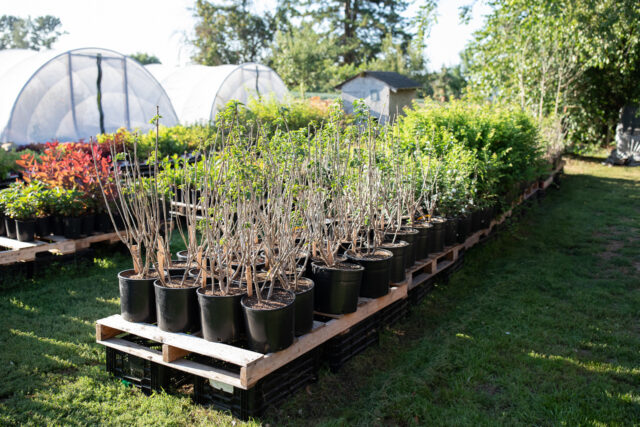
Unlike England, where they have an incredible selection of specialty plants readily available, here in the States, many of the family-owned nurseries have gone out of business in the last decade, which has made sourcing plants, especially on such a large scale, very challenging.
My goal was to essentially build an entire nursery to work from so that when Becky arrived we had all of the plants available that she might need and there would be no waiting for plants once the designs were finalized.
Between trees, shrubs, and perennials, I sourced over 40,000 individual plants (from small 50-cell plugs all the way up to balled and burlapped trees) for this project and had a running joke going with our local nursery (which I frequent often) that I was going to become their competition.
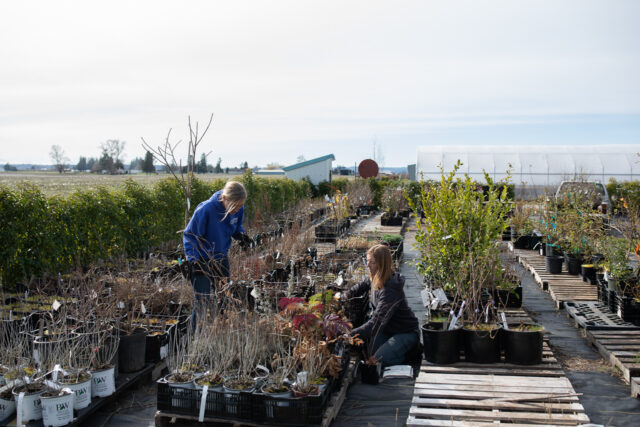
I’ve put together a full list of all the places I sourced plants from for this project. If you’re looking for some really wonderful sources, I highly recommend all of these companies.
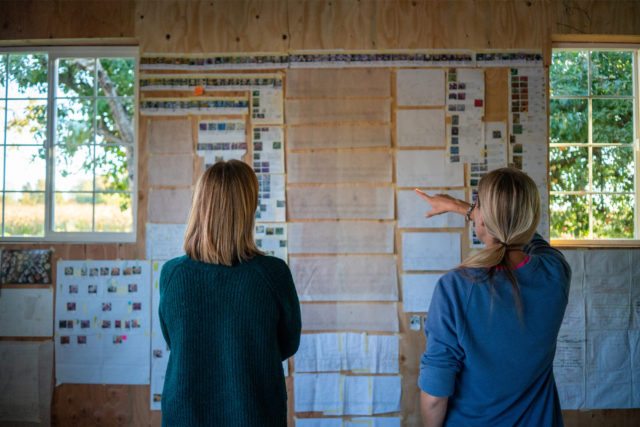
This list included getting water out to the farthest corners of the property, establishing roadways so that vehicles and equipment could have easy access to the growing space, setting aside enough room to store tools and supplies, making sure to include generous turn radiuses so that dump trucks with compost could easily make deliveries … so many essential, but not very exciting details.
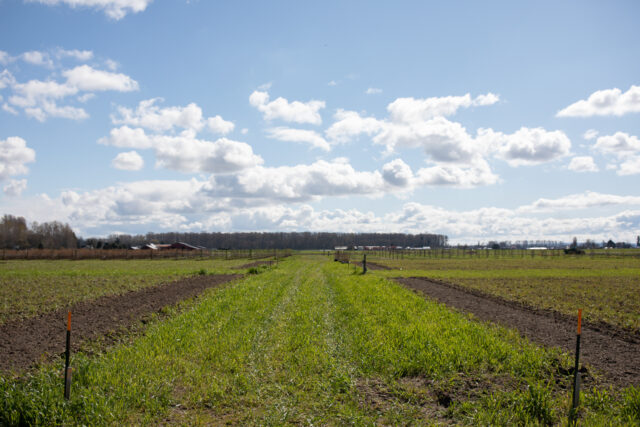
Once the blueberries were dug up and given away to local school gardens, parks, and neighbors, the farm was essentially a wide-open exposed field with no trees, no shrubs, and no personality.
When you were standing out in the open field, there was this strange sense of vulnerability, kind of like being a tiny little mouse standing in the middle of a meadow with eagles circling overhead. There was no place to tuck away or hide, and everything felt way too exposed.

Along the outside edges of all of our growing blocks, we planted a series of different hedgerow plant combinations to test out which varieties were most suitable for our climate and needs.
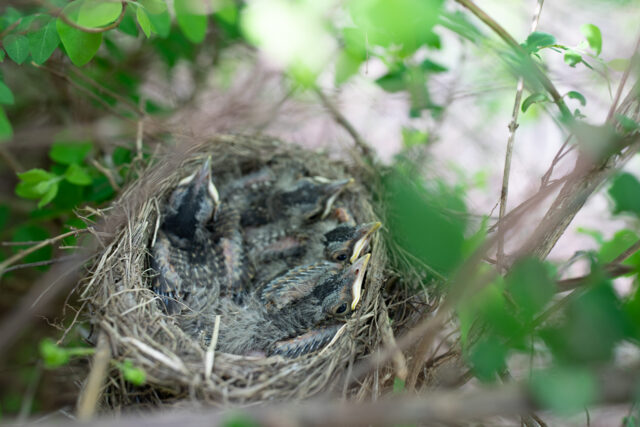
I’ve heard hedgerows described as a living corridor for wildlife, helping them safely travel from one place to another.
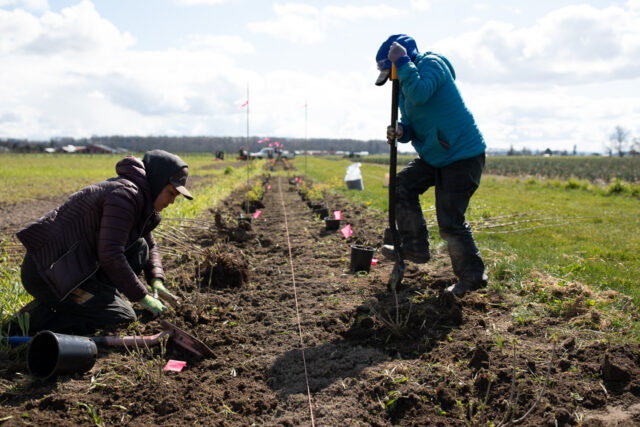
In addition to planting hedgerows along our field blocks, we also planted both evergreen and deciduous single-species hedges around some of the gardens. Unlike the hedgerows that are meant to create a beautiful tangle of life, these single-species hedges are quite different in appearance and in overall growth habit. This type of hedge is traditionally pruned to maintain a neat and tidy appearance.
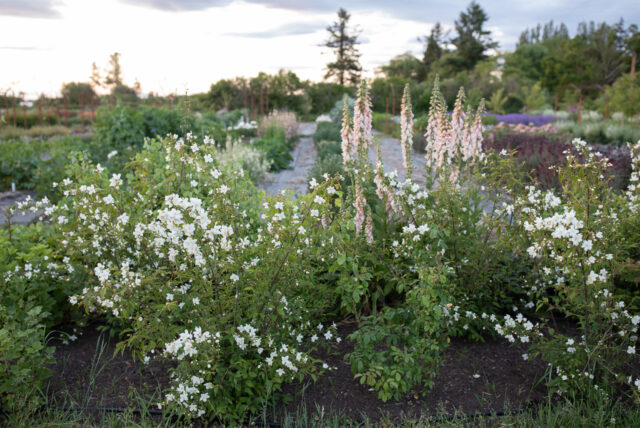
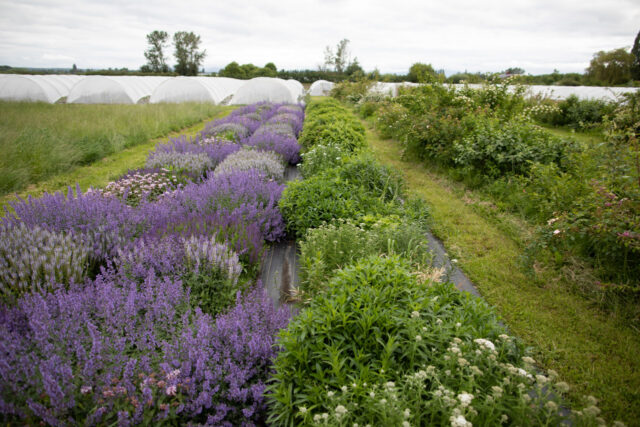
After spending a good deal of time researching the perennials that are most attractive to pollinators, Becky went to work designing a series of pollinator strips. These are beautifully curated collections of perennials planted in larger, more naturalistic swaths, which provide a food source for wildlife along the edges of our growing fields.
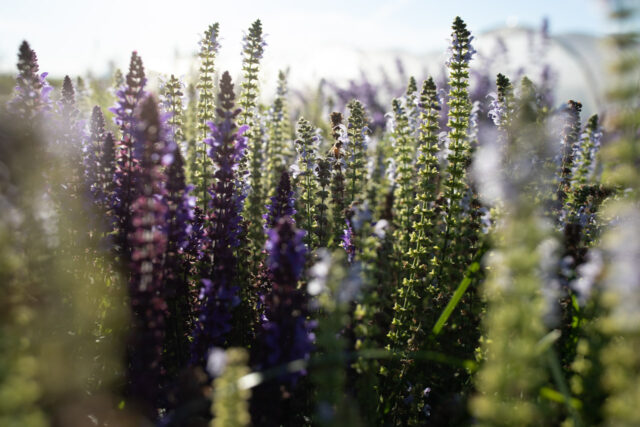
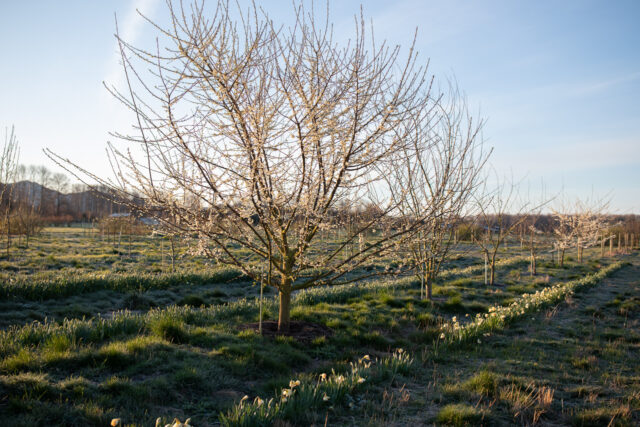
I always felt sad about making that decision, but there was not enough room to have both in our backyard. Finally, all these years later, the big farm had room to plant a new orchard and I was able to replace all of the trees that I had given away, plus many more.
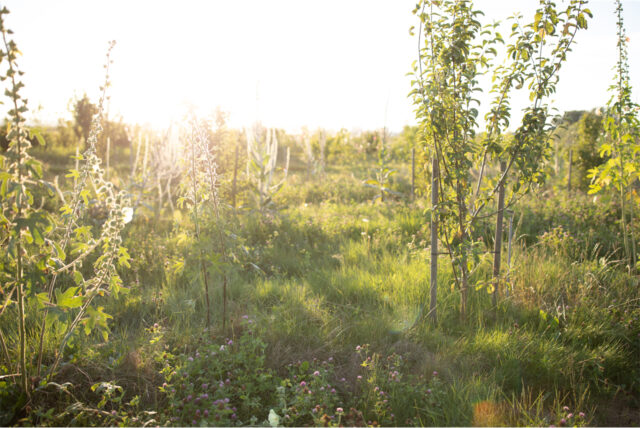
One of my very favorite things we did in the orchard was to transplant all of our daffodils and narcissus into the grass pathways. In the spring when the trees are in full flower, the daffodils form a carpet of blooms at their feet.
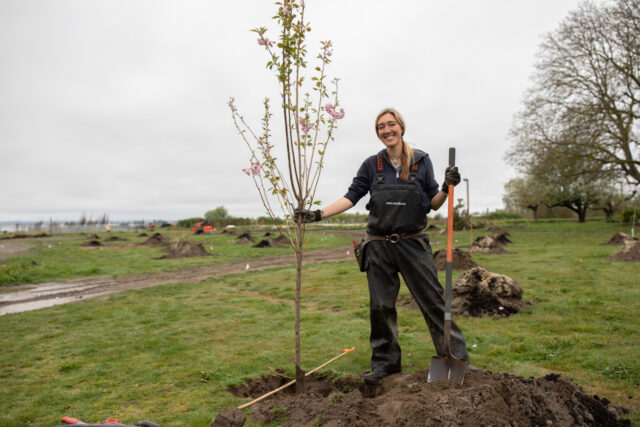
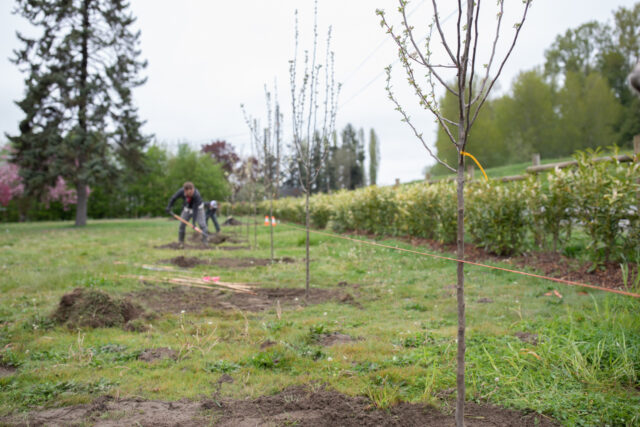
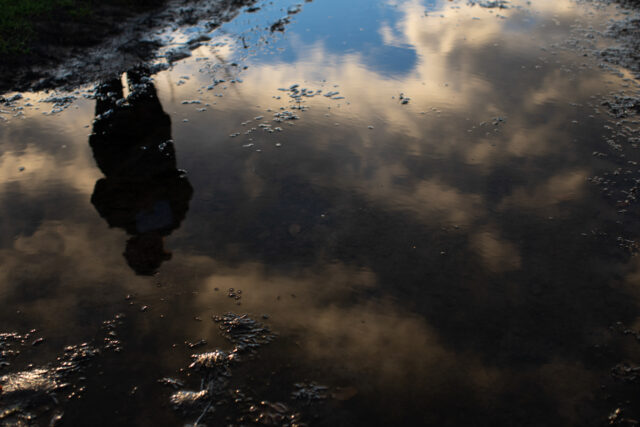
The tadpole puddle, as my kids call it, is bordered by a large field that we designated as a woodland. It is filled with maples, liquidambar, zelkova, hazelnuts, crabapples, and London planes.
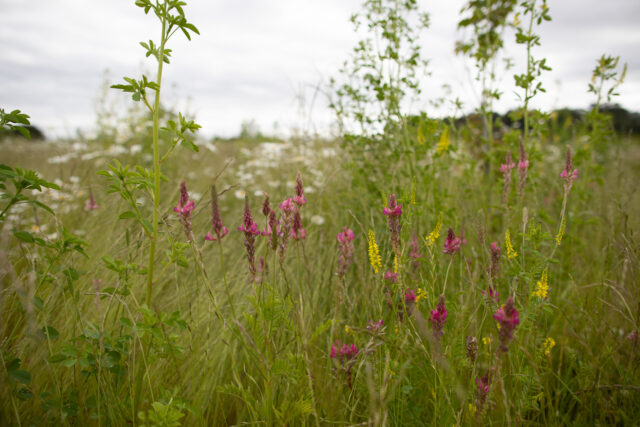
On particularly difficult days, there is something incredibly calming about sitting in a field of tall grass and watching it blow in the breeze that somehow makes the stress of the day melt away.
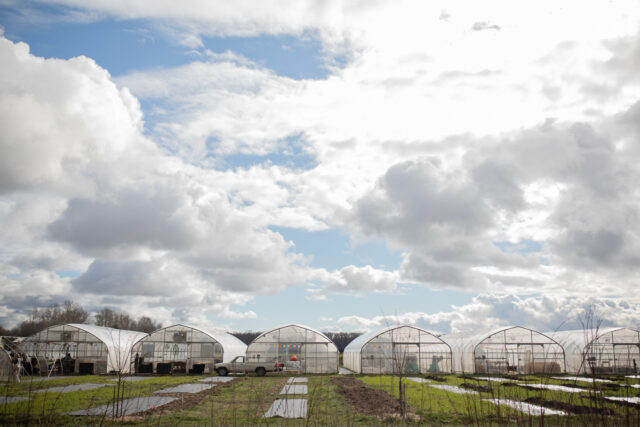
This way we would have easy access to the restroom, water, and all of the tools and supplies that are stored inside.

This fleet of 24 little hoops has been lovingly nicknamed the Shire because their unique gothic shape reminds me of little hobbit houses. These structures were purchased from Farmers Friend and I can’t recommend this company highly enough.
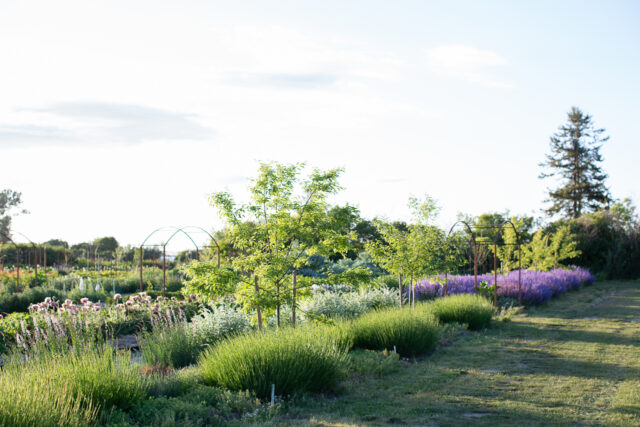
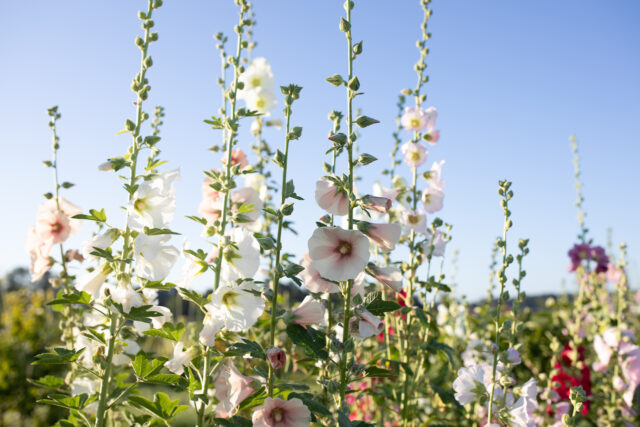
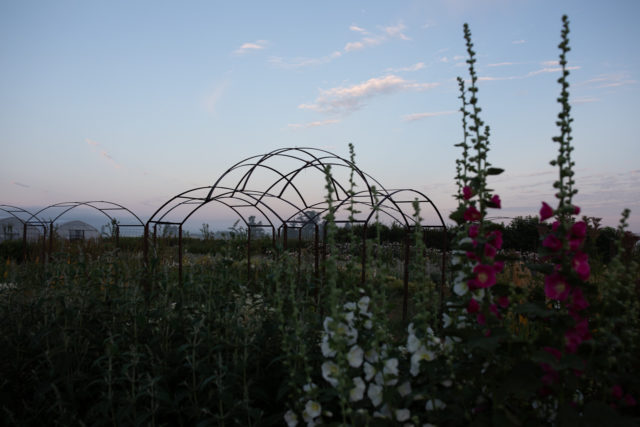
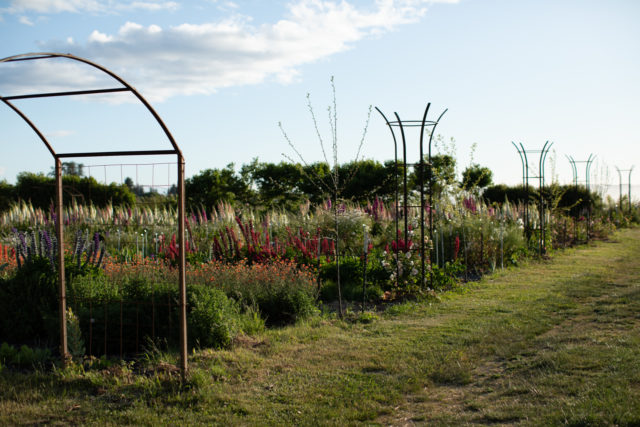
Along the other roadway is a series of tall metal pillars that will also have climbing roses growing up through the middle and cascading over the tops. The idea is that they will resemble fountains of flowers.
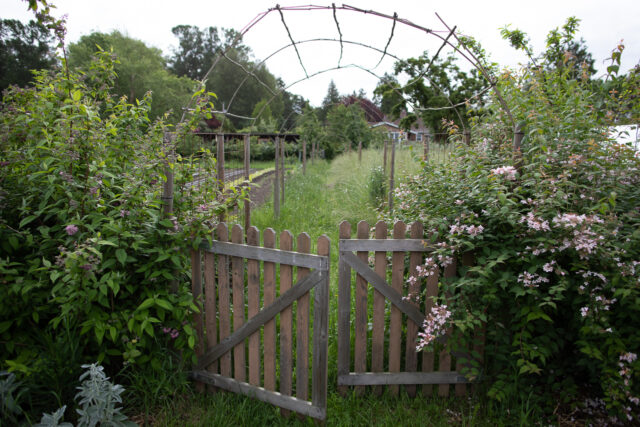
Of all the design projects that we tackled in the nearly 2 years that Becky was here with us, she felt this project was one of the most important. After so many years of not having any privacy, I could finally stretch out and have my own little sanctuary.
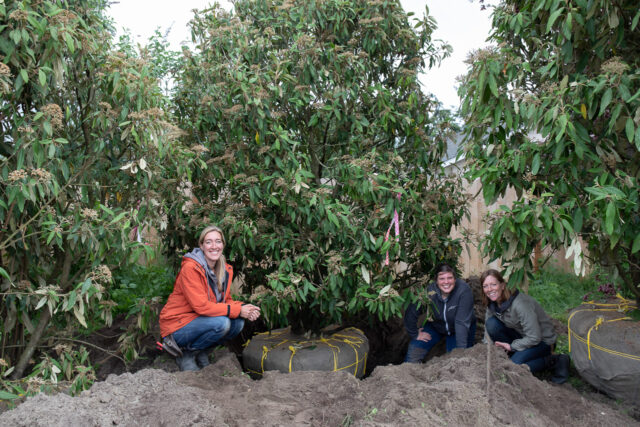
However, in our home garden, we decided to do the opposite and worked with a local family-owned nursery that specializes in growing and installing nearly mature trees and shrubs.
The owner Terry Wiggins, one of the most solid guys around, jokes that his business is all about giving people the gift of time. Wiggin’s Nursery Co. has perfected the art of growing and transplanting specimen trees and shrubs that allow gardeners to have a fully mature garden installed in just a matter of days.
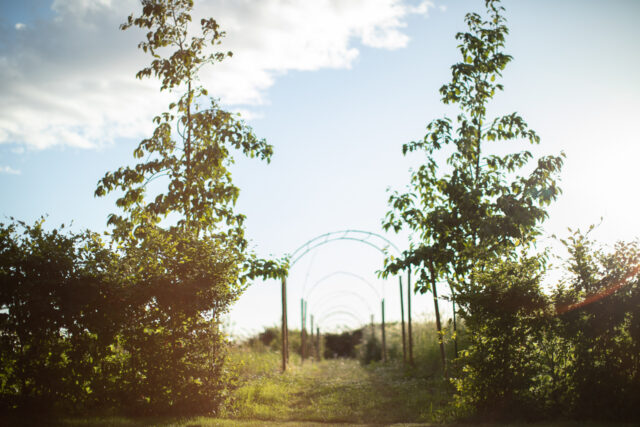
In the beginning, I felt a bit nervous about making such an investment in our space, but of all the things that we tackled, our home garden is my very favorite. Becky was right.
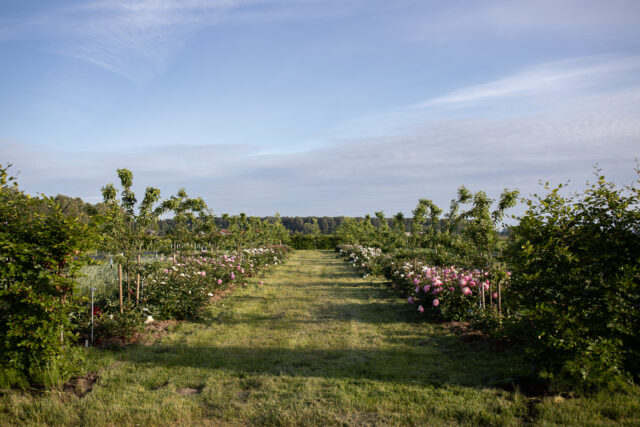
Now that the bones of the space are starting to fill in, the farm is finally starting to really feel like a place.
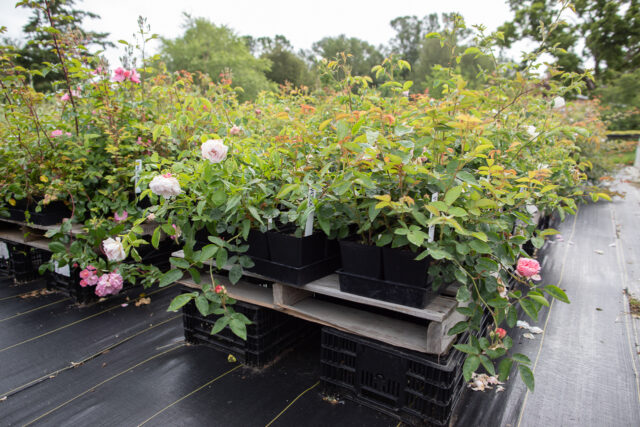
You can read about our progress in this Rose Project Update.
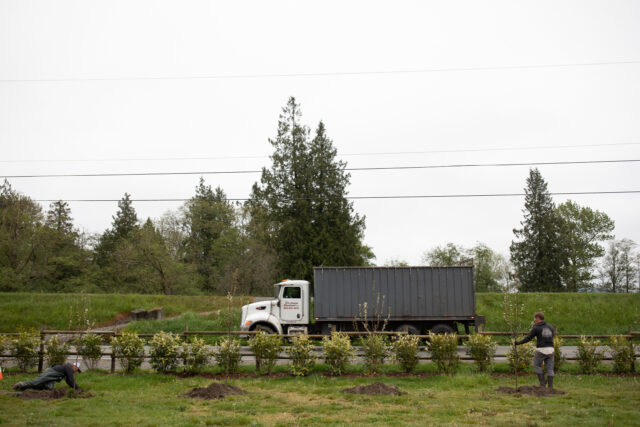
And so much gratitude for our crew (especially Francisco) for the years of work they have invested in the transformation of this place, from planting thousands of baby plants in the ground to tending them in every type of weather to mulching, weeding, and pruning—what a feat!
Please note: If your comment doesn’t show up right away, sit tight; we have a spam filter that requires us to approve comments before they are published.
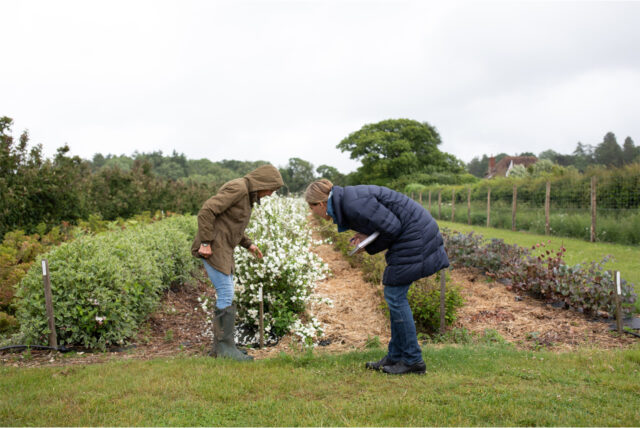
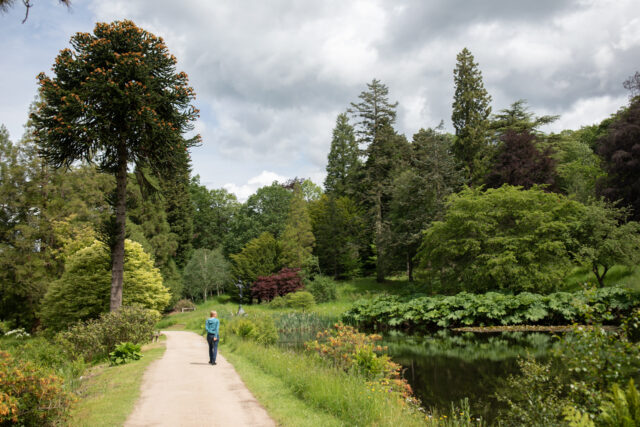
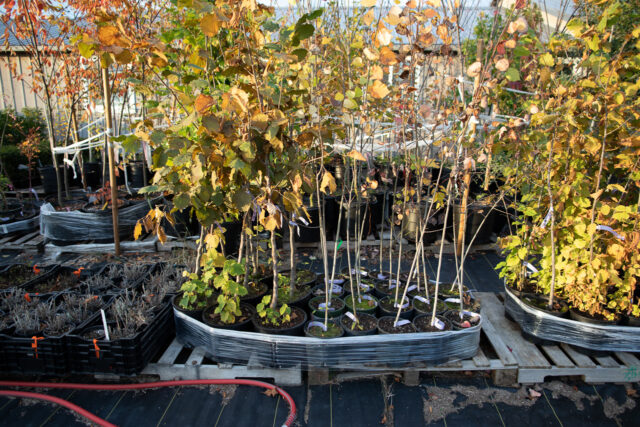
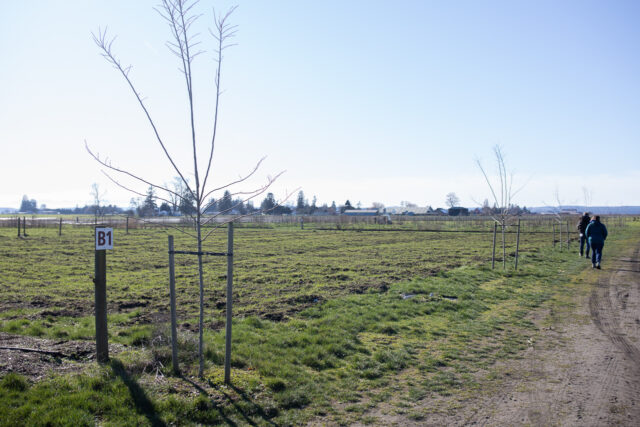
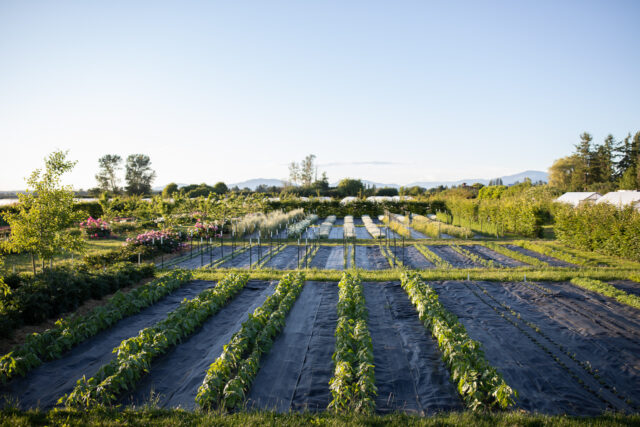
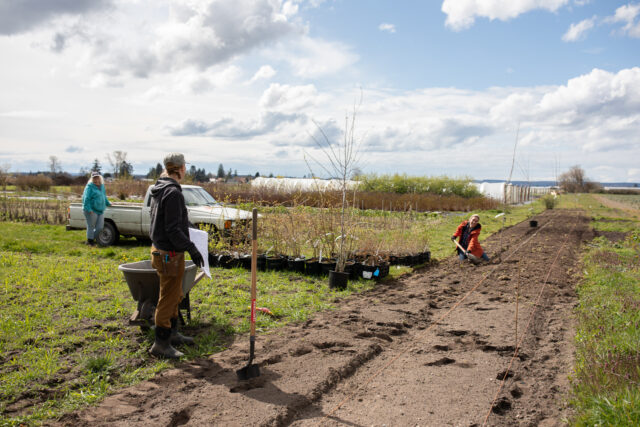
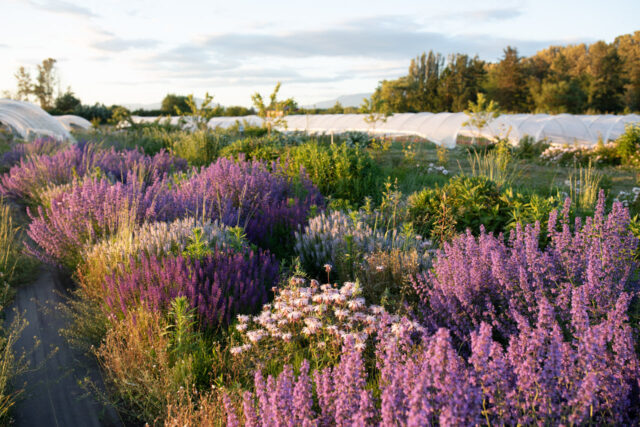
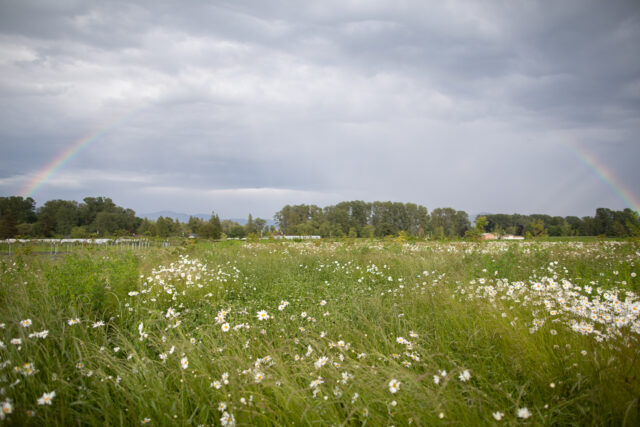
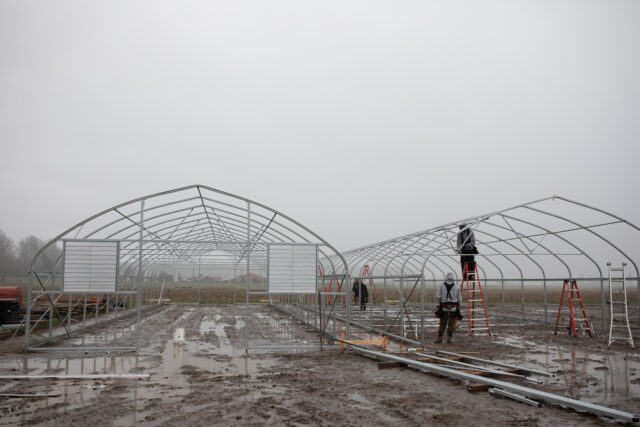
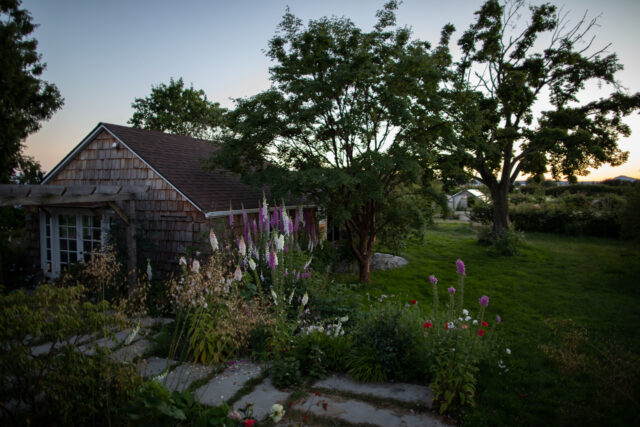

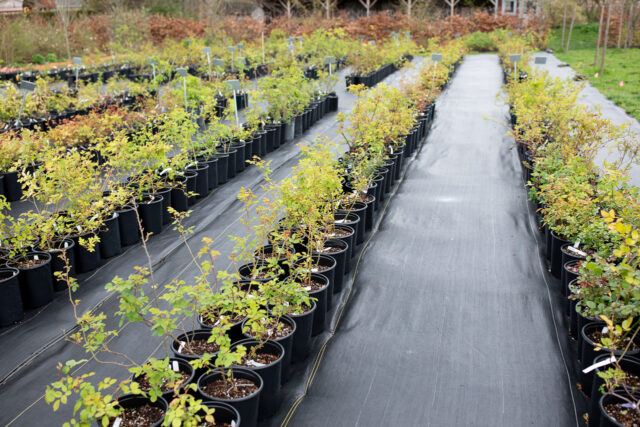
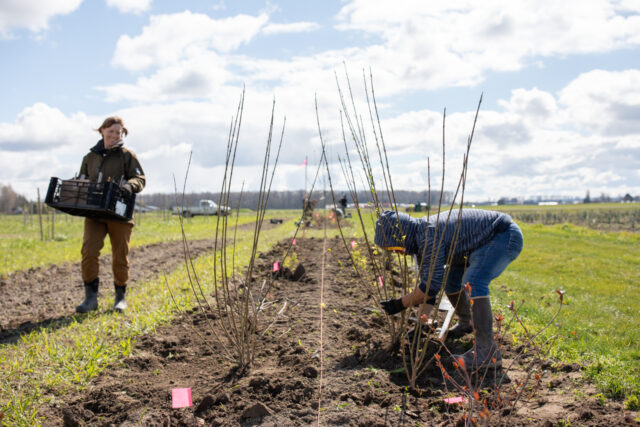
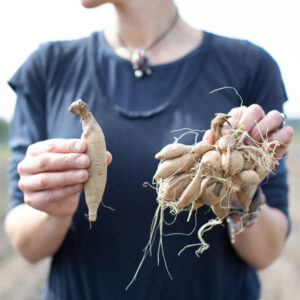

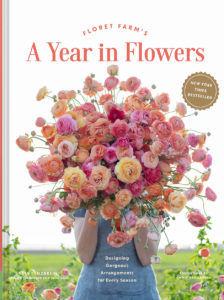
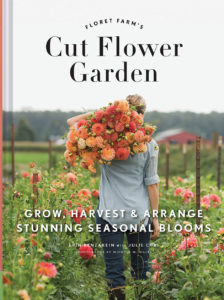


Kathy Ormiston on
Home with Covid, so I just watched the first season of Growing Floret. I loved the last episode with Becky Crowley. It would be so interesting to see an update on how the design for the farm has filled in and evolved. It has given me ideas for my own garden/farm backyard in Davis, California.